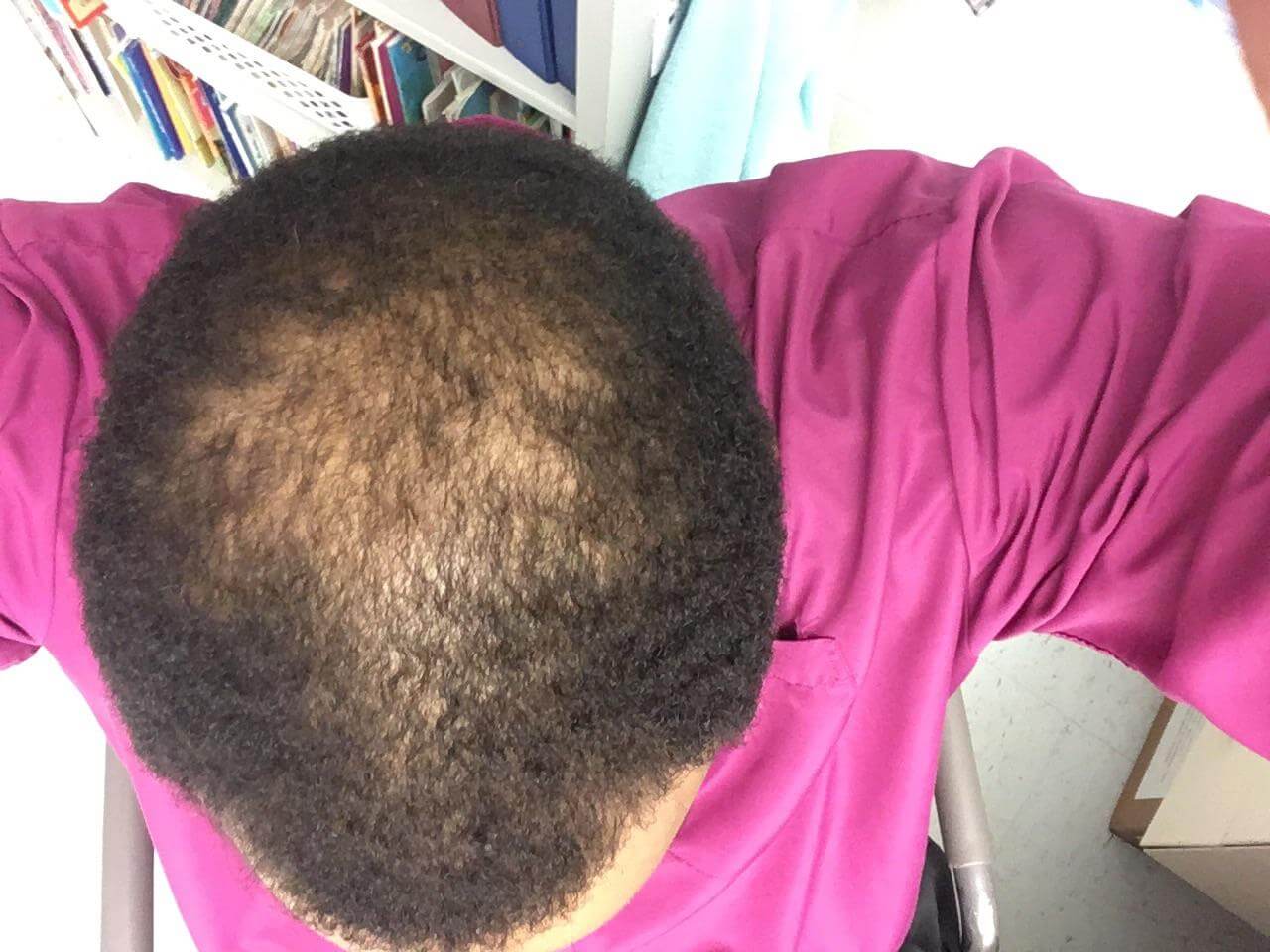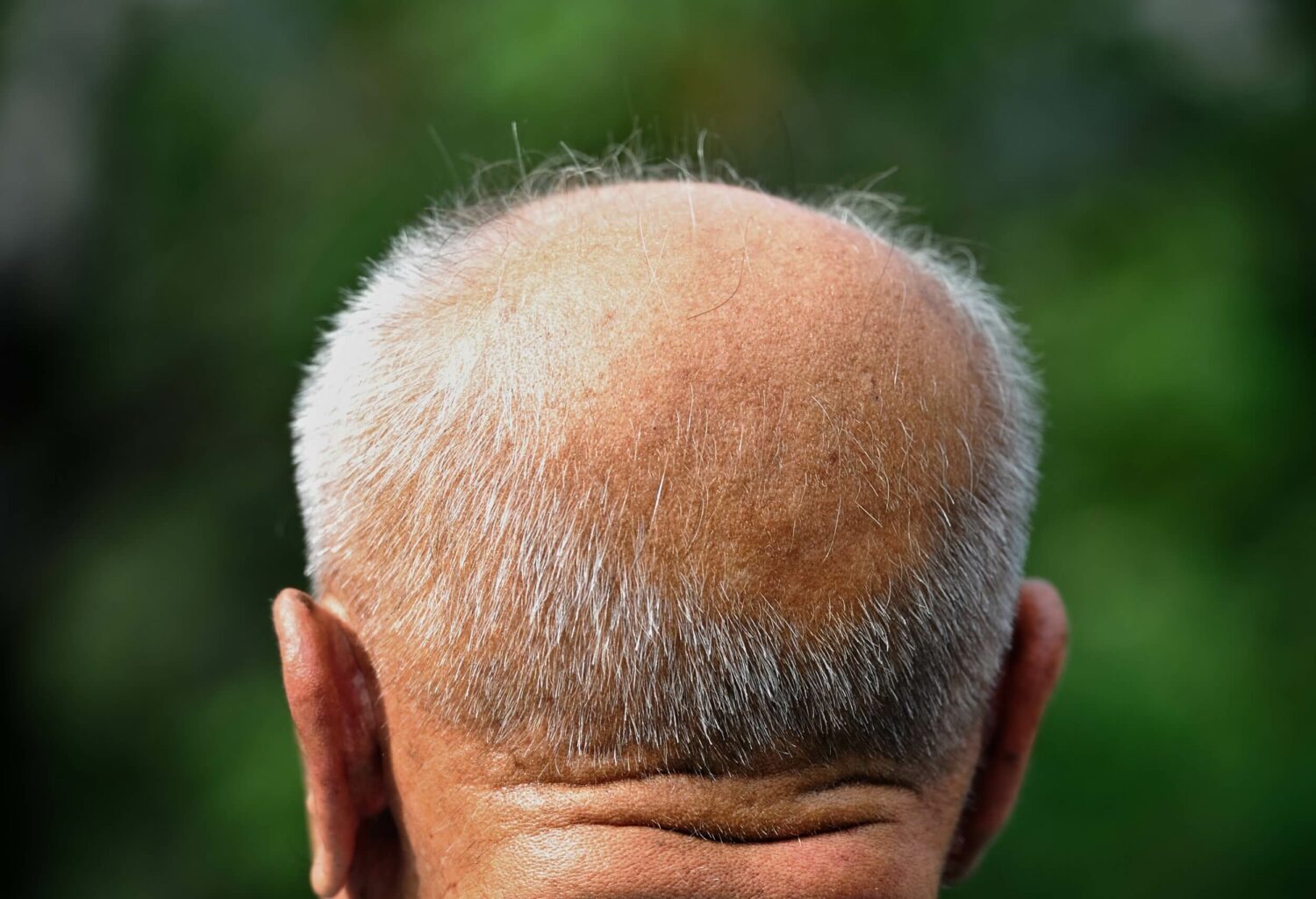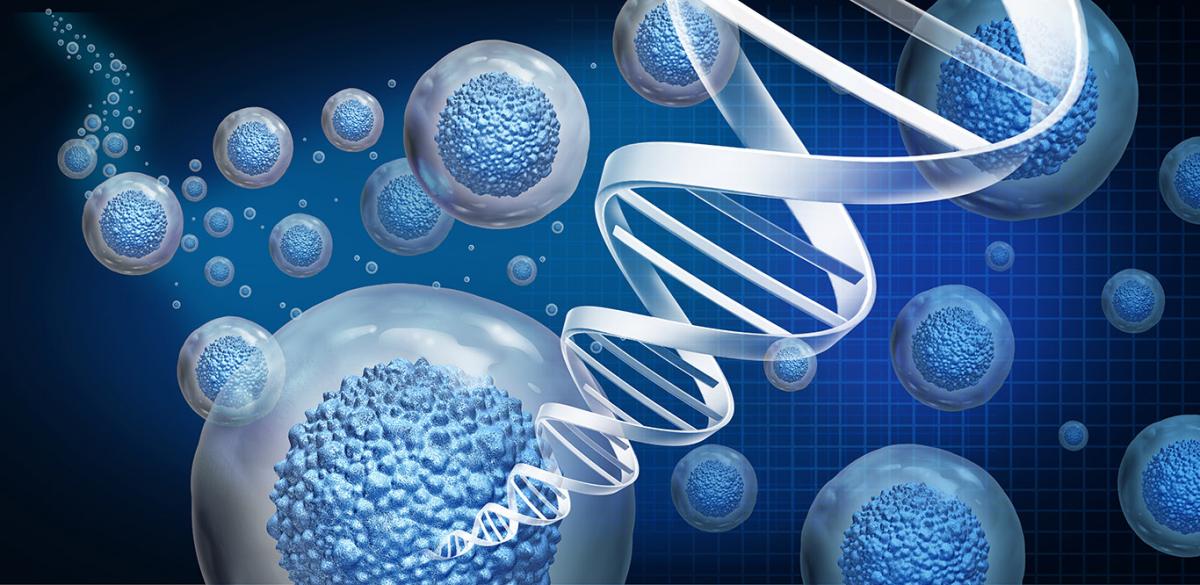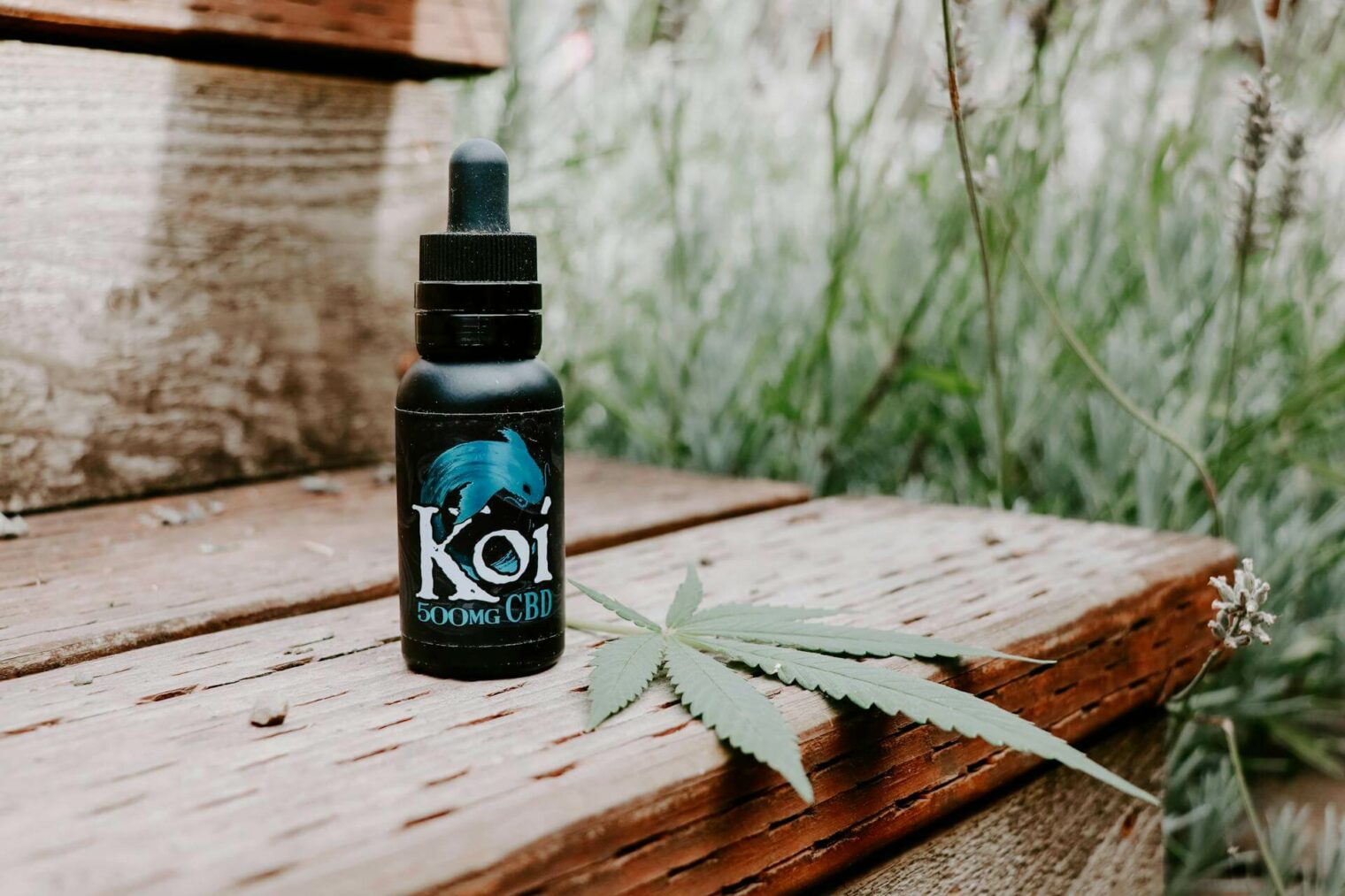Are you looking for viable solutions for male hair loss? Hair loss can be a distressing problem for many men, with male pattern baldness leading the charge as one of the most common types. Whether it’s noticing a few extra hairs in the comb or recognising a receding hairline in the mirror, the quest for solutions becomes inevitable.
Interestingly, over 60% of men will experience some form of hair loss by the age of 35. This significant figure highlights just how widespread and pressing this issue is.
Our blog brings a ray of hope in finding effective solutions for male hair loss in 2024. From cutting-edge treatments like PRP therapy and oral finasteride to embracing natural remedies such as scalp massage and essential oils, we outline an array of options tailored to halt thinning hair and promote regrowth.
We also shed light on non-surgical strategies that boost confidence while addressing balding concerns. Stick around to uncover how you can turn back the clock with these solutions for male hair loss!
Understanding Hair Loss in Men
Hair loss in men can be classified into different types such as male-pattern baldness, alopecia areata, telogen effluvium, and traction alopecia. Causes of hair loss in men include genetics and family history, medical conditions, medication and treatments, and stress.
Types of hair loss (male-pattern baldness, alopecia areata, telogen effluvium, traction alopecia)
Male-pattern baldness, also known as androgenetic alopecia, leads the charge as the most prevalent form of hair loss in men. It typically manifests through a receding hairline coupled with thinning atop the head.
Genetics play a significant role here, setting in motion a gradual reduction in hair follicle size which eventually hampers new hair growth. This condition often becomes a prime candidate for treatments aimed at male pattern baldness treatment and nonsurgical hair restoration options.
On another front, alopecia areata stands out as an autoimmune disorder where the immune system mistakenly attacks hair follicles, leading to patchy hair loss across the scalp or body.
Telogen effluvium triggers widespread thinning after significant stressors push more hairs into the resting phase, while traction alopecia arises from the constant pull on the roots due to tight hairstyles or headgear.
Each type presents unique challenges for those seeking solutions in regenerative medicine or exploring effective methods in halting progression and promoting scalp health and regrowth.
Causes (genetics & family history, medical conditions, medication & treatments, stress)
Genetics and family history play a significant role in male hair loss. Research indicates that male-pattern baldness, the most common cause of hair loss in men, can be inherited. Studies suggest that if a man’s father is bald, he is more likely to experience hair loss himself.
Additionally, certain medical conditions such as thyroid disorders and alopecia areata can contribute to hair thinning or shedding. Furthermore, medications used for treating various health issues like cancer, high blood pressure, arthritis, depression and heart problems have been associated with causing hair loss in some individuals.
Stress also has an impact on hair health; while it doesn’t directly result in male-pattern baldness, it can exacerbate underlying conditions leading to increased hair fall.
Available Treatment Options
Several treatment options exist, including medications like minoxidil and finasteride, as well as medical therapies such as platelet-rich plasma and hair transplantation.
Medications (minoxidil, finasteride)
Minoxidil and finasteride are two medications commonly used to treat male-pattern baldness. Minoxidil, available as a topical solution or foam, is applied directly to the scalp, stimulating hair growth and preventing further loss.
Studies have shown that minoxidil can improve hair regrowth in around 40-60% of men. On the other hand, finasteride comes in pill form and works by reducing the hormone dihydrotestosterone (DHT) levels, which is known to shrink hair follicles.
Clinical trials have demonstrated that finasteride can effectively slow down hair loss and promote regrowth in about 80% of men with male-pattern baldness.
These medications have been proven effective for many men dealing with male pattern baldness and provide valuable options for those seeking solutions beyond natural remedies or surgical treatments.
They play a crucial role in helping individuals restore their confidence and embrace their appearance with renewed self-assurance.
Medical therapies (platelet-rich plasma, hair transplantation)
Platelet-rich plasma (PRP) therapy involves injecting a concentration of platelets derived from the patient’s blood into the scalp. This stimulates hair growth and enhances thickness, making it an effective option for male hair loss treatment.
PRP procedures can lead to substantial improvement in hair density, with noticeable results typically visible within three to six months.
Hair transplantation is a surgical procedure that involves moving hair follicles from one part of the body (donor site) to the balding or thinning parts (recipient site). This method has shown remarkable success in restoring natural-looking hair growth.
It is considered a lasting solution to male pattern baldness and has been continuously advancing, with modern techniques ensuring more natural results and minimal scarring than predecessors.
Moving onto “Natural Solutions for Hair Loss,” let’s explore alternative non-medical methods for addressing this concern.
Non-surgical options (laser combs, over-the-counter therapies, wigs & hairpieces)
Laser combs, over-the-counter therapies, and wigs or hairpieces are non-surgical options for tackling male hair loss. These alternatives can be effective in addressing the issue, especially when used as part of a comprehensive hair care regimen.
Over-the-counter therapies often contain ingredients like minoxidil that encourage hair growth and prevent further loss. Laser combs work by stimulating the scalp, promoting blood circulation to rejuvenate hair follicles.
Additionally, wigs and hairpieces offer immediate aesthetic solutions while allowing natural hair to grow undisturbed.
When exploring non-surgical options for treating male pattern baldness or other forms of hair loss, it’s crucial to align these choices with individual needs and preferences. Some men may find laser combs convenient due to their ease of use at home; others may prefer the convenience and instant impact of wigs or hairpieces when dealing with thinning areas or complete baldness.
It’s essential to consider consulting a dermatologist or trichologist before selecting an option to understand which solution aligns best with one’s specific condition and ultimate regrowth goals.

Natural Solutions for Hair Loss
For natural solutions to male hair loss, consider essential oils and scalp massage. These options can help promote hair growth without the need for medical intervention.
Essential oils
Essential oils have gained popularity for their potential to promote hair growth and reduce hair loss in men. Some essential oils, such as rosemary oil and peppermint oil, have been shown to stimulate hair follicles and improve circulation to the scalp.
These oils can also help reduce inflammation and support overall scalp health, contributing to better hair growth. When properly diluted with carrier oils, such as coconut or jojoba oil, essential oils can be massaged into the scalp or added to shampoos for a natural approach to addressing male pattern baldness.
Studies have indicated that certain essential oils possess properties that may inhibit the production of specific hormones related to hair loss. For instance, saw palmetto extract is known for its ability to block 5-alpha-reductase, an enzyme linked to male pattern baldness.
Incorporating these essential oils into a regular grooming routine could aid in boosting confidence among men experiencing hair thinning or seeking regrowth solutions.
Quitting smoking
Transitioning from essential oils to quitting smoking, it is important to note that smoking can significantly contribute to hair loss in men. Research has shown that the chemicals in cigarettes can damage hair follicles and impede blood flow to the scalp, leading to weakened and brittle hair.
Furthermore, smoking can exacerbate hormonal imbalances linked to male-pattern baldness. Therefore, kicking the habit not only improves overall health but also supports better hair growth.
As per recent studies, more than 40% of men who experience hair loss are smokers. By quitting this habit, individuals can dramatically reduce their risk of accelerated hair thinning and improve their chances of regaining healthy locks.
Additionally, ceasing smoking promotes a healthier scalp environment by increasing circulation and oxygen levels – both critical for robust hair growth. Embracing a smoke-free lifestyle is an effective step towards preventing further hair loss and fostering confidence-boosting results.
Scalp massage
Scalp massage is a simple yet effective way to promote hair growth and reduce hair loss. Massaging the scalp increases blood flow to the hair follicles, which in turn delivers more nutrients to the scalp and stimulates hair growth.
It also helps in reducing tension and stress, which are known contributors to hair loss. In addition, using essential oils during a scalp massage can further enhance its benefits by nourishing the scalp and strengthening the hair roots.
Incorporating regular scalp massages into your grooming routine can significantly contribute to maintaining healthy hair and preventing male pattern baldness. By stimulating circulation and reducing stress, this natural remedy aids in promoting confidence-boosting regrowth while providing an opportunity for relaxation within everyday life.
Moving on to “Healthy diet solutions for male hair loss”…
Healthy diet
Consuming a balanced diet rich in essential nutrients is crucial for overall health and can significantly impact hair health. Foods high in protein, such as lean meats, fish, nuts, and legumes, aid in the growth and repair of hair follicles.
Additionally, including iron-rich foods like spinach and lentils can help combat hair thinning caused by iron deficiency. Omega-3 fatty acids found in salmon and flaxseeds support scalp health, promoting stronger and shinier hair.
Furthermore, incorporating vitamin E from sources like avocados and sunflower seeds helps protect the scalp from oxidative stress – a key contributor to hair loss.
By choosing nutrient-dense options like fruits, vegetables, whole grains, and healthy fats while minimising processed foods and excessive sugar intake, individuals can provide their bodies with the necessary building blocks for maintaining healthy hair growth with solutions for male hair loss.
Dealing with Hair Loss
Coping with hair loss can be challenging, but there are effective strategies to boost confidence and manage the impact. Knowing when to seek professional advice is crucial for finding personalised solutions for male hair loss.
Coping mechanisms
Finding effective coping mechanisms is crucial for men experiencing hair loss. It’s important to maintain a positive self-image and boost confidence during this challenging time. Engaging in regular physical activity, connecting with supportive friends and family, and seeking professional counselling can all help manage stress and anxiety related to hair loss, improving overall well-being.
Exploring new hairstyles or embracing baldness confidently also plays a role in accepting the changes. Equipping oneself with information about available treatments provides a sense of control over the situation.
Remember, reaching out for support when needed demonstrates strength and resilience through this solutions for male hair loss journey.
When to consult a doctor
Transitioning from coping mechanisms, it is crucial to know when to consult a doctor about male hair loss. Seeking professional advice is necessary if over-the-counter treatments or natural remedies do not yield satisfactory results.
If you notice sudden or severe hair loss or experience bald patches with redness, scaling, or itching of the scalp, it’s time to contact a healthcare provider. Additionally, seeking medical guidance becomes imperative if hair loss impacts your self-esteem and confidence negatively or persists despite trying various treatment options.
Understanding the pivotal role of consulting a doctor for male hair loss necessitates timely intervention and tailored treatment plans for optimal regrowth and restoration. Consulting a doctor remains vital for accurate diagnosis and appropriate intervention in addressing this concern comprehensively. This is especially true where solutions for male hair loss is concerned.
Frequently asked questions
Are hair loss treatments safe for long-term use? Yes, both minoxidil and finasteride are approved by the FDA for long-term use. Minoxidil has been widely used since the 1980s, and finasteride has been prescribed to treat male pattern hair loss since 1997.
Studies have shown that these medications can effectively slow down or even reverse hair loss in some individuals.
What is the best time to consult a doctor about hair loss? It’s advisable to seek professional advice if you notice sudden or significant hair shedding, experience bald patches, or have concerns about your thinning hair.
Consulting a doctor promptly can help identify any underlying medical conditions contributing to your hair loss and determine the most suitable treatment plan tailored towards your individual needs.
Is it true that scalp massage can promote hair regrowth? Scalp massage may help improve blood circulation to the hair follicles, which could potentially stimulate new growth. While there isn’t robust scientific evidence supporting its effectiveness on its own, combining scalp massage with other proven treatments might enhance overall results in combating male pattern baldness. That’s why you need some viable solutions for male hair loss.
Solutions for Male Hair Loss
Male hair loss has various types such as male-pattern baldness, alopecia areata, telogen effluvium, and traction alopecia. Genetics & family history, medical conditions, medication & treatments, and stress all contribute to hair loss in men.
Available treatment options include medications like minoxidil and finasteride, medical therapies such as platelet-rich plasma and hair transplantation, and non-surgical options like laser combs and wigs & hairpieces.
Natural solutions for hair loss encompass essential oils, quitting smoking, scalp massage, and a healthy diet. Dealing with hair loss involves coping mechanisms and knowing when to consult a doctor. We hope these cool solutions for male hair loss really helped you guys.














